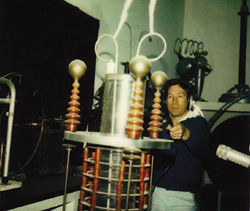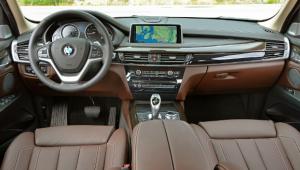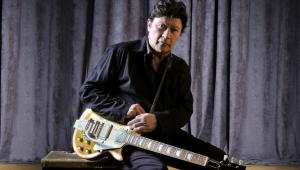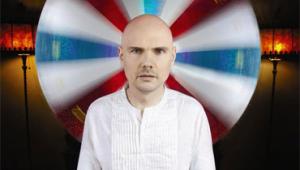The Making of a Soundtrack

The culprits have been identified, and they're heading straight for the bank. The smoke and flames, falling façades, and collapsing columns of today's visual effects are so convincing that audiences suspend disbelief without breaking a sweat. We're so used to viewing the impossible that we take it for granted even as we marvel at the realism of the images. But what does an exploding White House sound like? Thank goodness, no one knows. Nonetheless, a crew of sound-effects experts had to concoct a convincing rendition for the film Independence Day. Obviously, they did a pretty good job. I don't remember anyone saying afterward, "That doesn't sound like the White House exploding!"
Ironically, the more successful sound artisans are in designing a persuasive soundtrack, the less likely the audience is to notice their efforts. In many ways, creating sound is more difficult than creating visuals. To appreciate why, it helps to understand what's involved in creating a soundtrack, and the often dicey conditions under which they're produced. Having supervised the Academy Award–nominated soundtrack for Disney's 1982 commercial flop Tron, I have a firsthand knowledge of the process, and while it has changed greatly over the past two decades, much remains the same, both technically and politically.
Politically? Consider the deluxe, THX-supervised, three-laserdisc set of Tron issued just before the laserdisc gave way to the DVD as the premier (pre-HD, that is) home theater source. The boxed set includes supplementary material such as interviews with director Steven Lisberger and producer Donald Kushner, as well as commentary on the analog track from the visual effects supervisors. But despite Tron's Oscar nomination for sound—Disney's first since Fantasia 42 years earlier—and the many innovative techniques used to create the soundtrack, no one bothered to interview me, or composer Wendy Carlos, or sound designer Frank Serafine, or the sound-effects editors, or the mixing engineers. Not a word about the sound can be found on the discs or in the booklet. The same goes for recent DVD releases of the film. But that's hardly surprising. The picture comes first, and Hollywood doesn't forget; check out the order of the credits when you watch your next blockbuster.
Talk Is Expensive!
Tron's sci-fi storyline puts a video-game inventor and computer hacker, played by Jeff Bridges, inside a computer, where he's forced to battle assorted computer programs, including some he's written himself. When I came aboard Tron sometime in 1981, production had already begun, and hours of film were already in the can. Location shooting at the Lawrence Livermore Laboratory had been completed, and the "inside-the-computer" filming was under way, under difficult circumstances.
 The plan was to shoot the inside-the-computer scenes in 70mm black and white. Each frame would then be blown up to a large transparency for processing on an animation table, using backlit colored gels and drawn backlit backgrounds. The actors wore black-and-white outfits and performed in front of black backdrops. The backdrops absorbed light like a giant black hole (the title of another Disney flop), and required so much lighting that the production almost blew the Burbank, California substation. The studio was forced to shift from quiet direct current (DC) lighting to the potentially noisy but more efficient AC type.
The plan was to shoot the inside-the-computer scenes in 70mm black and white. Each frame would then be blown up to a large transparency for processing on an animation table, using backlit colored gels and drawn backlit backgrounds. The actors wore black-and-white outfits and performed in front of black backdrops. The backdrops absorbed light like a giant black hole (the title of another Disney flop), and required so much lighting that the production almost blew the Burbank, California substation. The studio was forced to shift from quiet direct current (DC) lighting to the potentially noisy but more efficient AC type.
My first day on the lot, I watched the afternoon rushes to see the results of the previous day's shooting. I was dismayed by what I heard.
Film sound starts with a production track—the sound recorded on set or on location as the action is filmed. While a recordist monitors a reel-to-reel tape recorder equipped with a special synchronizing track locked to the camera, a boom operator manipulates a highly directional microphone connected to the end of a swiveling, telescopic boom that stays close enough to the actor to pick up his or her speech but far enough away to avoid intruding into the frame. After shooting is completed and all the scenes are in the can, a film editor creates a workprint by putting the picture and production sound together.
Virtually none of Tron's production-track dialog was usable. For one thing, the costumes made abundant use of Styrofoam, which squeaked loudly anytime anyone moved. For another, the sets—many consisting of built-up wooden platforms—weren't "dressed"; when anyone ran, you heard the distinctive sound of hollow plywood: thump thump thump. The final knife in the back of the production sound was a pervasive 60Hz hum from the AC lights, caused by careless placement of the microphone cables.
 Unusable production sound is not normally a disaster, because most sounds you hear in a movie are added after the fact in a process known as postproduction. For example, most of the dialog you hear in modern movies is re-recorded in a studio under controlled conditions. When you see Tom Hanks walking in the distance at LAX, a 747 screaming overhead, and you hear him as clearly as if he were sitting next to you, how do you think that's done?
Unusable production sound is not normally a disaster, because most sounds you hear in a movie are added after the fact in a process known as postproduction. For example, most of the dialog you hear in modern movies is re-recorded in a studio under controlled conditions. When you see Tom Hanks walking in the distance at LAX, a 747 screaming overhead, and you hear him as clearly as if he were sitting next to you, how do you think that's done?
It's done by playing the scene repeatedly in a studio while Hanks re-creates his lines until they're in perfect sync with his onscreen lips and the director is satisfied with his emotional reading of the lines. In the early days of cinema, such scenes were spliced into an endless loop that repeated continuously until the actor got it right, hence the term looping. Today's more sophisticated technique is called automatic dialog replacement, or ADR.
Once the dialog is re-recorded, the production-sound track can be discarded. In the final mix, the other sound elements—airplanes, footsteps, wind blowing, children laughing, music, etc.—are blended with the dialog in whatever proportion the mixing engineers choose. Next time you watch a movie, keep in mind that most of what you hear has been cobbled together from pieces—little or none of it existed when the scene was shot.
In Tron, all of the dialog "inside" the computer needed to be re-recorded, as did some of the dialog from the "real-world" scenes. This was not just for technical reasons: some of the writing was flat as week-old beer. Many of the film's funniest lines were ad-libbed by Jeff Bridges at the looping sessions. More than 500 lines of additional dialogue were recorded during those sessions.
After the actors have repeated their lines in the studio, taping dozens of takes of each one, a team of dialog editors goes through the takes, choosing the best ones and syncing them to the picture to create the final dialog track. In addition, walla (the sound of nonverbal muttering) must be created and cut in for scenes that include crowds or large gatherings in restaurants, airport terminals, and the like.
 All of this costs money—lots of it. But I was in for a big shock when I checked out the budget for Tron's dialog replacement: a measly total of $5000. At the (then) going rate of $200/hour, we were budgeted for a total of 25 hours to re-record the entire film, every line from every actor—an impossible feat. And that didn't include paying for the time to edit the re-recorded dialog.
All of this costs money—lots of it. But I was in for a big shock when I checked out the budget for Tron's dialog replacement: a measly total of $5000. At the (then) going rate of $200/hour, we were budgeted for a total of 25 hours to re-record the entire film, every line from every actor—an impossible feat. And that didn't include paying for the time to edit the re-recorded dialog.
Kaboom!
Meanwhile, a team of sound-effects editors working under a supervising sound-effects editor (aka the sound designer) must gather all the other sounds required to bring the picture to life. Depending on the budget, the team uses a sound-effects library of pre-existing sounds or custom-records sounds for the project.
Sound editors learn early on that the actual sound of an onscreen action is rarely effective. When Indiana Jones punches out a bad guy, they can't use the true sound of a fist hitting human flesh; it just doesn't have enough oomph. Instead, they use something totally unrelated. What sounds convincing and seamless, even in a shot of normal live-action footage, is frequently a number of odd and unusual sounds combined to create the desired effect.
When it comes to adding sound to special-effects shots, the choices can get bizarre. The sound of the giant stone ball that chases Harrison Ford in Raiders of the Lost Ark is a slowed-down recording of a Honda Accord rolling backward down a gravel road. The distinctive sound of the fighter spacecraft in Star Wars is an amalgam of many diverse elements, including elephant roars played backward. Don't believe me? Watch the film again and listen carefully—you'll hear it. Using sounds of actual living creatures to depict mechanical devices is common today, but back in 1977 it was an audacious innovation pioneered by sound designer Ben Burtt.

Once all the sound effects have been created and/or gathered, they're transferred to 35mm magnetic stock and meticulously spliced together in sync with the picture. Creating a particularly complex sound can require dozens of sound reels running simultaneously. For an entire film, this time-consuming, labor-intensive process can require thousands of hours to complete. Today, this cutting-and-pasting process is typically accomplished in the digital domain using computer-based digital audio workstations.
All the sound effects in the computer world of Tron had to be created from scratch. Who knew what a light cycle (an electronically generated motorcycle), or a giant solar sailer (an electronic sailing vessel that traveled along a beam of light), or a deadly jai alai–like game "sounded like"? These sounds had to be created using a combination of organic and electronic sounds.




























































